Categories: Interesting Facts, Interesting electrical news
Number of views: 57998
Comments on the article: 1
The future of energy - superconducting power generators, transformers and power lines
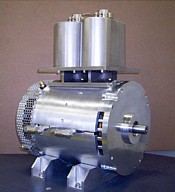 One of the main directions of the development of science outlines theoretical and experimental studies in the field of superconducting materials, and one of the main directions of the development of technology is the development of superconducting turbogenerators.
One of the main directions of the development of science outlines theoretical and experimental studies in the field of superconducting materials, and one of the main directions of the development of technology is the development of superconducting turbogenerators.
Superconducting electrical equipment will dramatically increase electrical and magnetic loads in the elements of devices and thereby dramatically reduce their size. In a superconducting wire, a current density of 10 ... 50 times the current density in conventional electrical equipment is permissible. Magnetic fields can be brought to values of the order of 10 T, compared with 0.8 ... 1 T in conventional machines. Given that the dimensions of electrical devices are inversely proportional to the product of the permissible current density and magnetic induction, it is clear that the use of superconductors will reduce the size and weight of electrical equipment many times!
According to one of the designers of the cooling system of new types of cryogenic turbogenerators of the Soviet scientist I.F. Filippov, there is reason to consider the task of creating economical cryoturbogenerators with superconductors solved. Preliminary calculations and studies give hope that not only the size and weight, but also the efficiency of new machines will be higher than that of the most advanced generators of a traditional design.
Academician I.A. Glebov, Doctor of Technical Sciences V.G. Novitsky and V.N. Shakhtarin. The KTG-1000 generator was tested in the summer of 1975, followed by the KT-2-2 model cryogenic turbogenerator, created by the Electrosila association in collaboration with scientists of the Physics and Technology Institute of Low Temperatures, Academy of Sciences of the Ukrainian SSR. The test results allowed the construction of a superconducting unit of significantly greater power.
Here are some data of a 1200 kW superconducting turbogenerator developed at VNIIelektromash. The superconducting field winding is made of a wire with a diameter of 0.7 mm with 37 superconducting veins of niobium-titanium in a copper matrix. Centrifugal and electrodynamic forces in the winding are perceived by a stainless steel bandage. Between the outer thick-walled stainless steel shell and the bandage there is a copper electrothermal screen, cooled by the flow of cold gaseous helium passing through the channel (it then returns to the fluidizer).
The bearings operate at room temperature. The stator winding is made of copper conductors (cooler - water) and is surrounded by a ferromagnetic shield made of laden steel. The rotor rotates in a vacuum space inside the shell of insulating material. The vacuum in the shell is guaranteed by gaskets.
The experimental KTG-1000 generator was once the largest cryoturbogenerator in the world in size. The purpose of its creation is to test the design of large rotating cryostats, helium supply devices to the superconducting rotor winding, study the thermal circuit, the operation of the superconducting rotor winding, and cooling it.
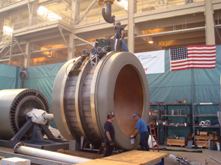 And the prospects are simply mesmerizing. A machine with a capacity of 1300 MW will have a length of about 10 m with a mass of 280 tons, while a machine of the same performance with a similar capacity will have a length of 20 m with a mass of 700 tons! Finally, it is difficult to create an ordinary machine with a capacity of more than 2000 MW, and with superconductors you can actually achieve a unit power of 20,000 MW!
And the prospects are simply mesmerizing. A machine with a capacity of 1300 MW will have a length of about 10 m with a mass of 280 tons, while a machine of the same performance with a similar capacity will have a length of 20 m with a mass of 700 tons! Finally, it is difficult to create an ordinary machine with a capacity of more than 2000 MW, and with superconductors you can actually achieve a unit power of 20,000 MW!
So, the gain in materials accounts for about three quarters of the cost. Production processes are facilitated. It is easier and cheaper for any machine-building plant to make several large electric machines than a large number of small ones: fewer workers are required, the machine park and other equipment are not so stressed.
To install a powerful turbogenerator, a relatively small area of the power plant is needed. This means that the cost of constructing a machine room is reduced, the station can be put into operation faster. And finally, the larger the electric machine, the higher its efficiency.
However, all these advantages do not exclude technical difficulties that arise when creating large energy units. And, most importantly, their power can be increased only to certain limits. Calculations show that it will not be possible to cross the upper limit limited by the power of a 2500 MW turbogenerator, the rotor of which rotates at a speed of 3000 rpm, since this limit is determined, first of all, by strength characteristics: stresses in the mechanical structure of a machine of higher power increase so much that centrifugal forces will inevitably cause rotor failure.
A lot of worries arise during transportation. To transport the same turbo-generator with a capacity of 1200 MW, it was necessary to build an articulated conveyor with a carrying capacity of 500 tons, a length of almost 64 m. Each of its two bogies rested on 16 wagon axles.
Many obstacles themselves fall away if you use the effect of superconductivity and apply superconducting materials. Then the losses in the rotor winding can be practically reduced to zero, since the direct current will not meet resistance in it. And if so, the efficiency of the machine increases. A large current flowing through the superconducting field winding creates such a strong magnetic field that it is no longer necessary to use a steel magnetic circuit, traditional for any electric machine. The elimination of steel will reduce the mass of the rotor and its inertia.
 The creation of cryogenic electric machines is not a fad, but a necessity, a natural consequence of scientific and technological progress. And there is every reason to argue that by the end of the century, superconducting turbogenerators with a capacity of more than 1000 MW will work in power systems.
The creation of cryogenic electric machines is not a fad, but a necessity, a natural consequence of scientific and technological progress. And there is every reason to argue that by the end of the century, superconducting turbogenerators with a capacity of more than 1000 MW will work in power systems.
The first electric machine in the Soviet Union with superconductors was designed at the Institute of Electromechanics in Leningrad back in 1962 ... 1963. It was a direct current machine with a conventional (“warm”) armature and a superconducting field winding. Its power was only a few watts.
Since then, the staff of the institute (now VNIIelektromash) has been working on the creation of superconducting turbogenerators for the energy sector. Over the past years, it was possible to build pilot structures with a capacity of 0.018 and 1 MW, and then 20 MW ...
What are the features of this brainchild of VNIIelektromash?
The superconducting field coil is in a helium bath. Liquid helium enters the rotating rotor through a pipe located in the center of the hollow shaft. Evaporated gas is directed back to the condensation unit through the gap between this pipe and the inner wall of the shaft.
In the design of the pipeline for helium, as in the rotor itself, there are vacuum cavities that create good thermal insulation. Torque from the prime mover is supplied to the field winding through the “thermal bridges” - a structure that is mechanically strong enough but does not transfer heat well.
As a result, the rotor design is a rotating cryostat with a superconducting field coil.
The stator of the superconducting turbogenerator, as in the traditional embodiment, has a three-phase winding in which an electromotive force is excited by the rotor magnetic field.Studies have shown that it is impractical to use a superconducting winding in a stator, since considerable losses occur on alternating current in superconductors. But the design of a stator with a “normal” winding has its own characteristics.
The winding turned out to be possible, in principle, to be placed in the air gap between the stator and the rotor and mounted in a new way, using epoxy resins and fiberglass structural elements. Such a circuit made it possible to place more copper conductors in the stator.
The stator cooling system is also original: the heat is removed by freon, which simultaneously performs the function of an insulator. In the future, this heat can be used for practical purposes using a heat pump.
A copper wire of rectangular cross section 2.5 x 3.5 mm was used in the turbo-generator motor with a capacity of 20 MW. 3600 veins made of niobium-titanium are pressed into it. Such a wire is capable of transmitting current up to 2200 A.
Tests of the new generator confirmed the calculated data. It turned out to be twice as light as traditional machines of the same power, and its efficiency is higher by 1%. Now this generator works in the Lenenergo system as a synchronous compensator and generates reactive power.
But the main result of the work is the colossal experience gained in the process of creating a turbogenerator. Relying on it, the Leningrad Electric Machine-Building Association Elektrosila has begun to create a turbogenerator with a capacity of 300 MW, which will be installed at one of the power plants under construction in our country.
The superconducting rotor field winding is made of niobium-titanium wire. Its device is unusual - the thinnest niobium-titanium conductors are pressed into a copper matrix. This is done in order to prevent the transition of the winding from the superconducting state to normal as a result of the influence of fluctuations in the magnetic flux or other reasons. If this does happen, the current will flow through the copper matrix, the heat will dissipate, and the superconducting state will be restored.
The manufacturing technology of the rotor itself required the introduction of fundamentally new technical solutions. If the rotor of a conventional machine is made from a solid forging of magnetically conductive steel, then in this case it should consist of several cylinders inserted one into another made of non-magnetic steel. Between the walls of some cylinders is liquid helium, between the walls of others a vacuum is created. The cylinder walls, of course, must have high mechanical strength, be vacuum-tight.
The mass of the new turbogenerator, as well as the mass of its predecessor, is almost 2 times less than the mass of the usual same power, and the efficiency is increased by another 0.5 ... 0.7%. The turbogenerator has been “living” for about 30 years and most of the time was in operation, so it is clear that such a seemingly small increase in efficiency will be a very substantial gain.
Power engineers need not only cold generators. Several dozens of superconducting transformers have already been manufactured and tested (the first of them was built by the American McPhee in 1961; the transformer worked at a level of 15 kW). There are projects of superconducting transformers for power up to 1 million kW. At sufficiently large powers, superconducting transformers will be lighter than usual by 40 ... 50% with approximately the same power losses as conventional transformers (in these calculations, the power of the fluidizer was also taken into account).
Superconducting transformers, however, have significant drawbacks. They are associated with the need to protect the transformer from overcoming it from the superconducting state during overloads, short circuits, overheating, when the magnetic field, current or temperature can reach critical values.
If the transformer does not collapse, it will take several hours to cool it again and restore superconductivity. In some cases, such an interruption in power supply is unacceptable.Therefore, before talking about the mass production of superconducting transformers, it is necessary to develop protective measures against emergency conditions and the possibility of providing consumers with electricity during downtime of the superconducting transformer. The successes achieved in this area allow us to think that in the near future the problem of protecting superconducting transformers will be solved, and they will take their place in power plants.
In recent years, the dream of superconducting power lines has become increasingly closer to realization. The ever-increasing demand for electricity makes transmission of high power over long distances very attractive. Soviet scientists have convincingly shown the promise of superconducting transmission lines. The cost of the lines will be comparable to the cost of conventional overhead power transmission lines (the cost of a superconductor, given the high value of the critical current density in comparison with the economically feasible current density in copper or aluminum wires, is low) and lower than the cost of cable lines.
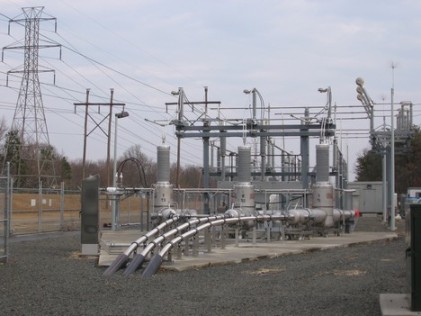
It is supposed to carry out superconducting power lines as follows: a pipeline with liquid nitrogen is laid between the end points of transmission in the ground. Inside this pipeline is a pipeline with liquid helium. Helium and nitrogen flow through pipelines due to the creation of a pressure difference between the starting and ending points. Thus, liquefaction and pumping stations will only be at the ends of the line.
Liquid nitrogen can be used simultaneously as a dielectric. The helium conduit is supported inside the nitrogen by dielectric racks (for most insulators, dielectric properties are improved at low temperatures). The helium pipeline has vacuum insulation. The inner surface of the liquid helium pipeline is coated with a layer of a superconductor.
Losses in such a line, taking into account the inevitable losses at the ends of the line, where the superconductor must interface with the tires at ordinary temperature, will not exceed a few fractions of a percent, and in ordinary power lines losses are 5 ... 10 times more!
By the forces of scientists of the Energy Institute named after G.M. Krzhizhanovsky and All-Union Scientific Research Institute of Cable Industry has already created a series of experimental pieces of superconducting AC and DC cables. Such lines will be able to transfer power to many thousands of megawatts with an efficiency of more than 99%, at a moderate cost and relatively low (110 ... 220 kV) voltage. Perhaps more importantly, superconducting power lines will not need expensive reactive power compensation devices. Conventional lines require the installation of current reactors, powerful capacitors in order to offset excessive voltage losses along the path, and lines on superconductors are able to self-compensate themselves!
Superconductors turned out to be indispensable in electric machines, the principle of operation of which is extremely simple, but which have never been built before, because their work requires very strong magnets. We are talking about magnetohydrodynamic (MHD) machines, which Faraday tried to implement as early as 1831.
The idea of experience is simple. Two metal plates were immersed in the Thames water on its opposite banks. If the river’s speed is 0.2 m / s, then, likening the jets of water to conductors moving from west to east in the Earth’s magnetic field (its vertical component is approximately 5 · 10–5 T), a voltage of about 10 μV / m can be removed from the electrodes .
Unfortunately, this experiment ended in failure, the "generator-river" did not work. Faraday could not measure the current in the circuit. But a few years later, Lord Kelvin repeated the experience of Faraday and received a small current. It would seem that everything remains as in Faraday: the same plates, the same river, the same instruments. Is that the place is not quite that.Kelvin built his generator down the Thames, where its waters mix with the salt water of the strait.
There she is! The water downstream was more saline and therefore had more conductivity! This was immediately recorded by the instruments. Increasing the conductivity of the “working fluid” is the general way to increase the power of MHD generators. But you can increase power in another way - by increasing the magnetic field. The power of the MHD generator is directly proportional to the square of the magnetic field strength.
Dreams of MHD generators got a real foundation around the middle of our century with the advent of the first batches of superconducting industrial materials (niobium-titanium, niobium-zirconium), from which it was possible to make the first, still small, but working models of generators, motors, conductors, solenoids . And in 1962, at a symposium in Newcastle, the British Wilson and Robert proposed a project for a 20 MW MHD generator with a field of 4 T. If the winding is made of copper wire, then at a cost of 0.6 mm / dollar. Joule losses in it will “eat up” полез useful power (15 MW!). But on superconductors, the winding will compactly surround the working chamber, there will be no losses in it, and cooling will take only 100 kW of power. Efficiency will increase from 25 to 99.5%! There is something to think about.
MHD generators were seriously taken up in many countries, because in such machines it is possible to use plasma 8 ... 10 times hotter than steam in turbines of thermal power plants, and according to the well-known Carnot formula, the efficiency will not be 40, but all 60 % That is why in the coming years near Ryazan the first industrial MHD generator for 500 MW will start operating.
Of course, it is not easy to create and use such a station economically: it is not easy to place near a plasma stream (2500 K) and a cryostat with winding in liquid helium (4 ... 5 K), incandescent electrodes burn and slag, those additives that only need to be leached from slags that were added to the plasma ionization fuel, but the expected benefits should cover all the labor costs.
One can imagine what a superconducting magnetic system of an MHD generator looks like. Two superconducting windings are located on the sides of the plasma channel, separated from the windings by multilayer thermal insulation. The windings are fixed in titanium cassettes, and titanium spacers are placed between them. Incidentally, these cassettes and spacers must be extremely durable, since the electrodynamic forces in the current windings tend to tear them apart and pull them together.
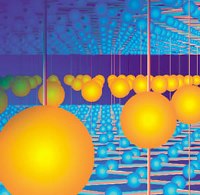 Since no heat is generated in the superconducting winding, the refrigerator, which is required for the superconducting magnetic system to work, must only remove the heat that enters the cryostat with liquid helium through thermal insulation and current leads. Losses in current leads can be reduced to practically zero if short-circuited superconducting coils powered by a superconducting DC transformer are used.
Since no heat is generated in the superconducting winding, the refrigerator, which is required for the superconducting magnetic system to work, must only remove the heat that enters the cryostat with liquid helium through thermal insulation and current leads. Losses in current leads can be reduced to practically zero if short-circuited superconducting coils powered by a superconducting DC transformer are used.
A helium liquefier, which will make up for the loss of helium that evaporates through insulation, is estimated to produce several tens of liters of liquid helium in 1 hour. Such liquefiers are produced by industry.
Without superconducting windings, large tokamaks would be unrealistic. In the Tokamak-7 installation, for example, a winding weighing 12 tons flows around a current of 4.5 kA and creates a 2.4 T magnetic field on the axis of a plasma torus of 6 m3. This field is created by 48 superconducting coils, consuming only 150 liters of liquid helium per hour, the re-liquefaction of which requires a power of 300 ... 400 kW.
Not only does big energy need economical compact powerful electromagnets, it is difficult to do without them for scientists working with record-breaking strong fields. Installations for magnetic separation of isotopes become much more efficient. Projects of large accelerators without superconducting electromagnets are no longer considered.It is completely unrealistic to do without superconductors in bubble chambers, which become extremely reliable and sensitive registrars of elementary particles. So, one of the record-breaking large magnetic systems based on superconductors (Argonne National Laboratory, USA) creates a 1.8 T field with a stored energy of 80 MJ. A gigantic winding weighing 45 tons (of which 400 kg went to a superconductor) with an inner diameter of 4.8 m, an outer diameter of 5.3 m and a height of 3 m requires only 500 kW for cooling to 4.2 K - a negligible amount of power.
The superconducting magnet of the bubble chamber of the European Center for Nuclear Research in Geneva seems even more impressive. It has the following characteristics: magnetic field in the center up to 3 T, internal diameter of the “coil” 4.7 m, stored energy 800 MJ.
At the end of 1977, one of the largest hyperconducting magnets in the world, Hyperon, was commissioned at the Institute of Theoretical and Experimental Physics (ITEP). Its working area has a diameter of 1 m, the field in the center of the system is 5 T (!). A unique magnet is designed for experiments at the IHEP proton synchrotron in Serpukhov.
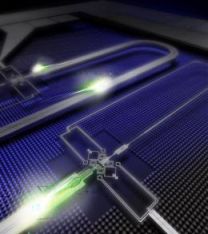 Having comprehended these impressive figures, it is already somehow inconvenient to say that the technical development of superconductivity is just beginning. As an example, we can recall the critical parameters of superconductors. If the temperature, pressure, current, magnetic field exceed some limiting values, called critical, the superconductor will lose its unusual properties, turning into ordinary material.
Having comprehended these impressive figures, it is already somehow inconvenient to say that the technical development of superconductivity is just beginning. As an example, we can recall the critical parameters of superconductors. If the temperature, pressure, current, magnetic field exceed some limiting values, called critical, the superconductor will lose its unusual properties, turning into ordinary material.
The presence of a phase transition is quite natural to use to control external conditions. If there is superconductivity, then the field is less than critical, if the sensor has restored resistance, the field is above critical. A series of a wide variety of superconducting meters has already been developed: a bolometer on a satellite can “feel” a lit match on Earth, galvanometers become more sensitive by several thousand times; in ultra-high-Q resonators, the oscillations of the electromagnetic field seem to be conserved, because they do not decay for an extremely long time.
Now is the time to look around the entire electrical part of the energy industry to understand how the scattering of superconducting devices can produce a total economic effect. Superconductors can increase the unit power of power units, high-voltage power can gradually turn into multi-ampere, instead of four or six times the voltage conversion between the power plant and the consumer, it is real to talk about one or two transformations with the corresponding simplification and cheaper circuit, the overall efficiency of electric networks will inevitably increase due to joule losses. But that is not all.
Electrical systems will inevitably take on a different look when superconducting inductive energy storage devices (SPINs) are used in them! The fact is that out of all industries, only in the energy sector there are no warehouses: the generated heat and electricity are nowhere to store, they must be consumed immediately. Certain hopes are associated with superconductors. Due to the lack of electrical resistance in them, the current can circulate through a closed superconducting circuit for an arbitrarily long time without attenuation until the time comes for its selection by the consumer. SPINS will become natural elements of the electrical network, it remains only to equip them with regulators, switches or converters of current or frequency when combined with sources and consumers of electricity.
The energy intensity of SPINs can be very different - from 10–5 (the energy of a portfolio that fell out of hands) to 1 kWh (a block of 10 tons that fell 40 meters from a cliff) or 10 million kWh! Such a powerful drive should have the size of a treadmill around the football field, its price will be 500 million dollars, and the efficiency - 95%.An equivalent accumulating power plant will be 20% cheaper, but it will spend a third of the capacity for its needs! The layout of the cost of such a SPIN is instructive in terms of its components: for refrigerators 2 ... 4%, for current converters 10%, for superconducting winding 15 ... 20%, for thermal insulation of the cold zone 25%, and for bandages, fasteners and spacers - almost 50 %
Since the report of G.M. Krzhizhanovsky according to the GOELRO plan at the VIII All-Russian Congress of Soviets more than half a century has passed. The implementation of this plan made it possible to increase the capacity of the country's power plants from 1 to 200 ... 300 million kW. Now there is a fundamental opportunity to strengthen the country's energy systems several dozen times, transferring them to superconducting electrical equipment and simplifying the very principles of building such systems.
The basis of energy at the beginning of the 21st century can be nuclear and thermonuclear stations with extremely powerful electric generators. Electric fields generated by superconducting electromagnets, powerful rivers can flow through superconducting power lines to superconducting energy storage, from where they will be selected by consumers as necessary. Power plants will be able to generate power evenly, day and night, and their release from planned regimes should increase the efficiency and service life of the main units.
You can add space solar stations to ground power plants. Hovering over fixed points of the planet, they will have to convert the sun's rays into short-wave electromagnetic radiation in order to send focused energy flows to ground-based converters into industrial currents. All electrical equipment of the space-space electrical systems must be superconducting, otherwise the losses in the conductors of the final electrical conductivity will turn out to be unacceptably large.
Vladimir KARTSEV "Magnet for three millennia"
See also at bgv.electricianexp.com
:
